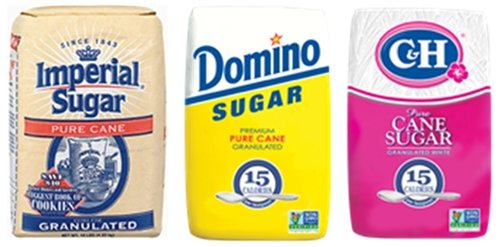Your undifferentiated content is getting lost in a sea of equally indistinguishable content. What you thought was your masterpiece of a whitepaper or e-book is in fact just more noise. Bad news, then: Your content has become a true commodity, with no intrinsic value. And—worse—your readers know it.
To figure out how we got here and what to do about it, let’s take a quick step back to your Economics 101 class (but without actually cracking open that book). A commodity, loosely defined, is a “basic good that is essentially identical to other goods of the same type” (think crude oil, wheat, water, natural gas, etc.).
The good itself has no inherent “qualitative differentiation”; the only true differentiation comes from the price of the good in the market.
In a commodity market, suppliers first compete on price, rushing to produce the good in the most efficient way possible to be the lowest-cost provider in what becomes an inexorable race to the bottom of the price-to-value equation. Then suppliers attempt to differentiate on other components—even though the good itself is unchanged:

Are sugar brands really differentiated?
(If you want a detailed history of price and commodity economics, feel free to read on here.)
In B2B marketing, the same thing is happening. The “good” in this case is your content.
With the rise of “inbound marketing,” championed by HubSpot and others—and content marketing as championed by pretty much everyone—we all rushed to produce blog posts and other content, and began to act as publishers to tell our brand’s story. And so the content explosion began.
Everyone, and I mean everyone, is publishing content of some kind at a blinding rate today. One survey found that some 3,400 B2B companies produced over 42,000 pieces of content per year!
But, with this drive to produce mass amounts of content and fill up editorial calendars, quality has suffered. Creating content isn’t easy, after all. So it’s no surprise that marketers have been focused on writing—at length. The result is a sea of static PDFs, 50-page whitepapers, e-books, and infographics, all chock-full of company-focused, seller-centric information that isn’t always engaging and rarely addresses the reader’s specific pain-points.
Multiply that times all of your competitors selling similar products and services, and you end up with a bunch of content that looks the same to prospective buyers who are trying to sift through that content to find something of value.
But wait, how many of your buyers are buying just one product or service? What other product or service categories are they also considering in parallel? Two? Five? Ten? What about all the categories that vendors like you would like them to consider? It isn’t hard to see that the math can become exponential.
Your prospects getting bombarded with content not only in your category but also multiple other categories—at the same time. No wonder they are feeling overwhelmed.
Unfortunately, old habits die hard: 70% of B2B marketers say they will create more content this year versus 2016. The problem is that all of this content is just adding to the cacophony. And content is becoming commoditized. The content itself is no longer differentiated, and neither is the delivery mechanism. How many lead-gated whitepapers or e-books are your prospects wading through in any given week?
Break free of the content commodity curve
How do you break free of the commodity curve? Let’s go back to Economics 101 (briefly).
Companies that are trying to break free of the commodity trap generally have just a few options:
- Create efficiencies in goods production to generate a profit at the market-established commodity price.
- Differentiate their offering based on service delivery in support of the commodity good.
- Re-architect the commodity good with value-added features to address new market realities, potentially in adjacent markets.
How do these approaches apply to your content strategy? Let’s look at each one.
1. Create efficiencies in goods production
Despite the push to deliver “more,” more isn’t actually better, especially more content. Customer preferences have shifted over the last few years, and what we’ve learned is that, ultimately, they don’t want to be sold to any more. Buyers of today are far more interested in engaging in a conversation, learning at their preferred pace, and on their own terms.
Instead, then, to be more efficient, test producing less content. But focus that content on high-value topics that are well aligned with your target buyer’s needs and interests.
2. Differentiate based on service delivery
Take an inventory of your content channels. What percentage of your content is delivered as a lead-gated PDF? What other channels are you using to deliver your content?
Refresh how you deliver your message and focus on the actual experience your buyers have when digesting your content. Try thinking outside of the whitepaper/e-book mindset, and consider incorporating more interesting, engaging formats, such as assessments, quizzes, and ROI calculators.
3. Re-architect your product to align with new market realities
Your content needs to align tightly with what your buyer wants to hear from you, at the specific time they want to hear it. Guide your readers to the right information that addresses their specific needs, challenges, wants, and interests.
But even that isn’t enough. The content also needs to be truly innovative, and it must stand out from the competitive sea of sameness. You can get there by focusing on driving personalized, engaging experiences that really connect with your audience on a one-to-one level.
The benefit? Buyers get valuable content that keeps them engaged, while you’re able to tease out the type of key sales criteria your sales team needs to accelerate leads through the funnel.
Step off the commodity curve today
As B2B marketers strive to improve ROI and deliver results across the board, the demand for content that engages their target audience will continue.
Although the notion that less can be more is slowly beginning to resonate, to truly keep content from becoming a commodity it needs to add value for the reader and it must be something worth interacting with.
Valuable content provokes its audience with thoughtful, relevant, and personal information. When used across the full spectrum of marketing campaigns, valuable content delivered through the types of personalized experiences that today’s customers expect leads to better business outcomes.
By using the three tips outline in this article, you can stand out from your competitors and avoid the commodity trap.
–
This article first appeared in www.marketingprofs.com
Seeking to build and grow your brand using the force of consumer insight, strategic foresight, creative disruption and technology prowess? Talk to us at +9714 3867728 or mail: info@groupisd.com or visit www.groupisd.com




